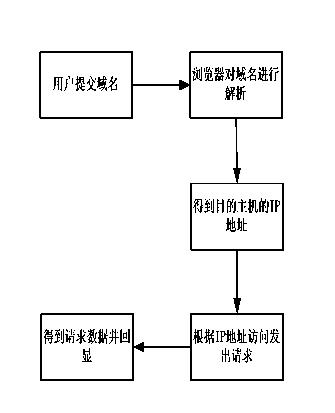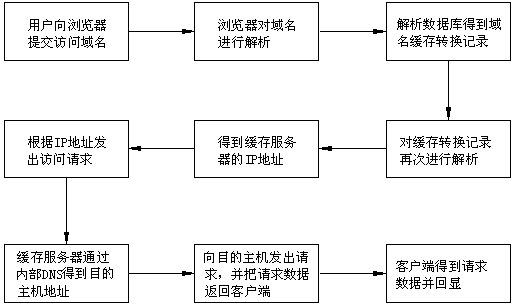Load balancing method based on transmission widespread network architecture
A technology of load balancing and network architecture, applied in the direction of transmission systems, electrical components, etc., can solve the problems of application server overloading and exiting services, local hot spot effects, etc., to improve response speed, broaden prospects, and solve network congestion. Effect
- Summary
- Abstract
- Description
- Claims
- Application Information
AI Technical Summary
Problems solved by technology
Method used
Image
Examples
Embodiment Construction
[0016] The load balancing method based on the transmission pervasive network architecture of the present invention will be further described in detail through the embodiments and drawings below, which does not limit the present invention.
[0017] The present invention mainly solves the following problems through the load balancing method based on the transmission pervasive network architecture: first, how to reduce the repeated transmission of redundant data in the network, because most of the content transmitted in the network currently has redundancy problems; the second Two, how to solve the influence of factors such as the load of the web server and the transmission distance, and improve the response speed; third, how to solve the load balancing problem during the network transmission process for content distribution is also a key technical problem that needs to be solved.
[0018] In order to achieve the above-mentioned purpose, the load balancing method based on the dist...
PUM
 Login to View More
Login to View More Abstract
Description
Claims
Application Information
 Login to View More
Login to View More - R&D
- Intellectual Property
- Life Sciences
- Materials
- Tech Scout
- Unparalleled Data Quality
- Higher Quality Content
- 60% Fewer Hallucinations
Browse by: Latest US Patents, China's latest patents, Technical Efficacy Thesaurus, Application Domain, Technology Topic, Popular Technical Reports.
© 2025 PatSnap. All rights reserved.Legal|Privacy policy|Modern Slavery Act Transparency Statement|Sitemap|About US| Contact US: help@patsnap.com


